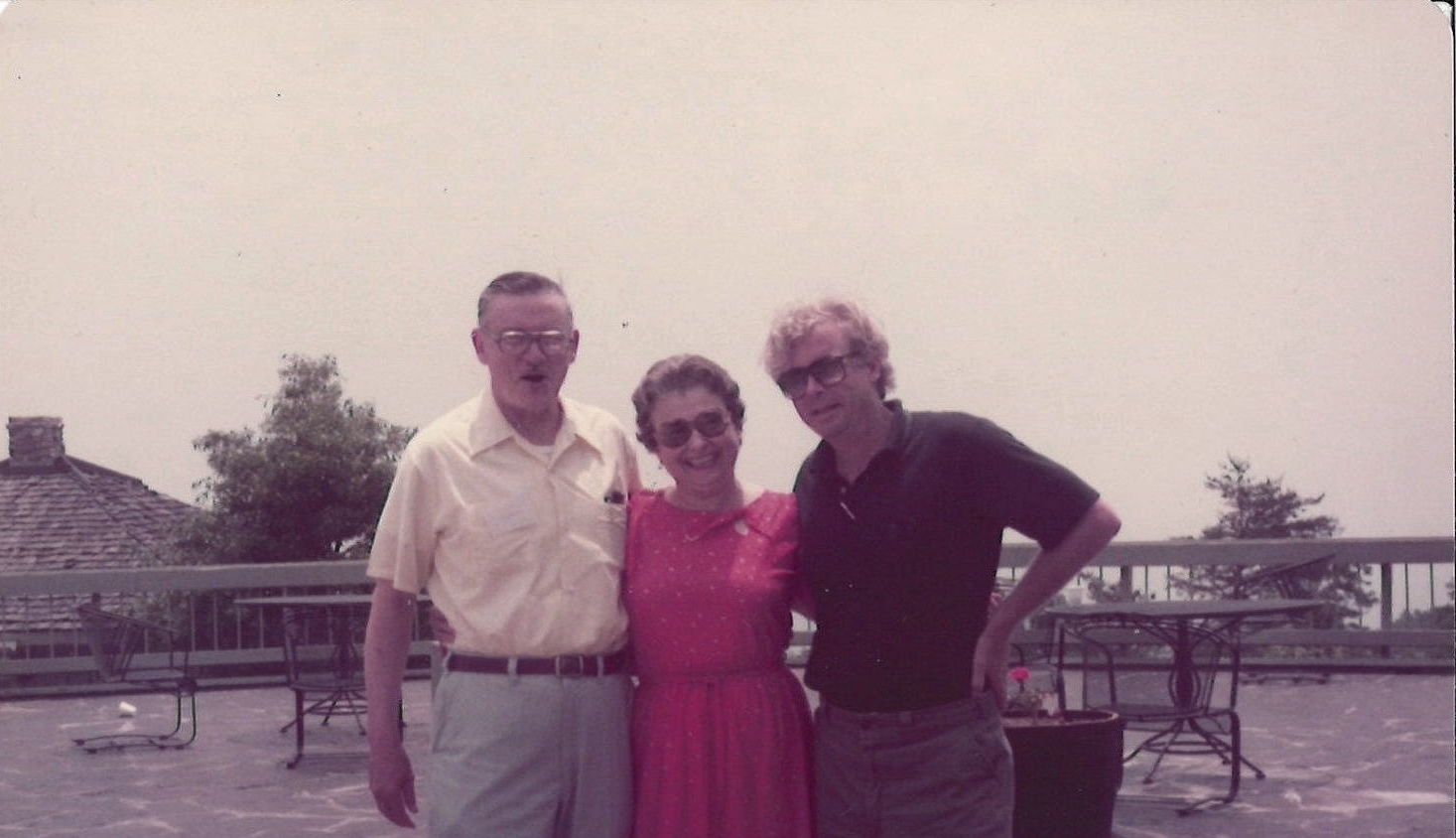This post is one in a series about the Buchanan Papers processing project. The project is supervised by Buchanan Papers Project Archivist Rebecca Thayer and is grant funded by the National Endowment for the Humanities.
One of my favorite things about processing is learning about a person or organization through their papers. While I knew the basics about James M. Buchanan prior to beginning this project, I didn’t know about the wider team that supported him and the Center for Study of Public Choice. There was one person in particular whose influence appeared across the collection – Betty Tillman.

James M. Buchanan (L) and Betty Tillman (R) at the Thomas Jefferson Center for Political Economy at the University of Virginia, 1967. James McGill Buchanan papers, C0246. Special Collections Research Center, George Mason University Libraries.
Tillman was initially hired as administrative support at the Thomas Jefferson Center for Political Economy at the University of Virginia in 1961. That was the beginning of her over 45-year collaboration with James M. Buchanan. She worked with him at universities across the state of Virginia, heading to Blacksburg and what was then Virginia Polytechnic Institute (VPI, today Virginia Tech) in 1969 before joining the Center in its move to Fairfax and George Mason University in 1983. She remained at Mason, working with Buchanan and the Center until her retirement in 2007.
After Buchanan’s Nobel Prize win, Tillman became his scheduling agent, handling the incredible increase in requests for appearances at conferences and lectures around the globe. She responded to autograph requests, booked events on his behalf, set up his schedule, and in many cases accompanied him on his international trips to keep them flowing smoothly.

James M. Buchanan (L) and Betty Tillman (R) at the National Palace Museum in Taiwan, 1988. James McGill Buchanan papers, C0246. Special Collections Research Center, George Mason University Libraries.
Besides her work assisting Buchanan, Tillman was also a fixture at the Thomas Jefferson Center and its successor, the Center for Study of Public Choice. Her affection for Center professors, visiting scholars, interview candidates, coworkers, and graduate students is obvious in her correspondence with them. “Mama Betty” fondly referred to Center students as “her boys” or “her boys and girls,” and seemed to take particular joy in seeing them come back as professors and scholars of their own. She kept in touch with graduates by organizing Virginia School get-togethers at the annual meetings of the Southern Economic Association. At Mason, she hosted international visitors to the Center in her home. All this led to her monikers, “the mother of public choice” and “the first lady of economics.”

Hand-drawn award in one of Tillman’s files. The description reads: “Presented once annually to the individual contributing most to the survival of faculty members with early classes” James McGill Buchanan papers, C0246. Special Collections Research Center, George Mason University Libraries.
Although Betty Tillman’s name didn’t feature in the background reading I did on Buchanan, I began to hear about her in discussions with researchers and archivists who previously worked on the collection. When I started to survey the papers myself, her importance and influence became obvious. From the /bht at the bottom of Buchanan’s correspondence marking her typewriting, to detailed conference planning and scheduling, to the Center financials, Tillman’s contributions were clear.
While some of the materials created by Tillman were mixed in with files maintained solely by Buchanan by previous processors, I was able to identify and maintain some files that were solely hers as a Betty Tillman papers series. Although files kept by Tillman are scattered throughout the collection, maintaining her files independently where possible both mirrors what was likely the setup of her office and highlights her importance to researchers who might not know her name. A similar series has been created for Jo Ann Burgess, another Center employee and assistant for Buchanan from the early 1990s.

Betty Tillman being honored by colleagues and friends at a public choice conference, circa 2000s.
The importance of support work done by women that facilitates work of others is often forgotten. The importance of Tillman’s work was recognized and celebrated by her Center friends, colleagues and graduates while she was alive, especially at her birthday/retirement celebration in 2007, where her 46 years of contributions to the Center and public choice were honored. Tillman passed away in 2013. Researchers will still be able to learn about her and her contributions to Buchanan’s career and to Center for Study of Public Choice through the Buchanan papers.
Follow SCRC on Social Media and look out for future posts on our Facebook, Instagram, and Twitter accounts. To search the collections held at Special Collections Research Center, go to our website and browse the finding aids by subject or title. You may also e-mail us at speccoll@gmu.edu or call 703-993-2220 if you would like to schedule an appointment, request materials, or if you have questions.

